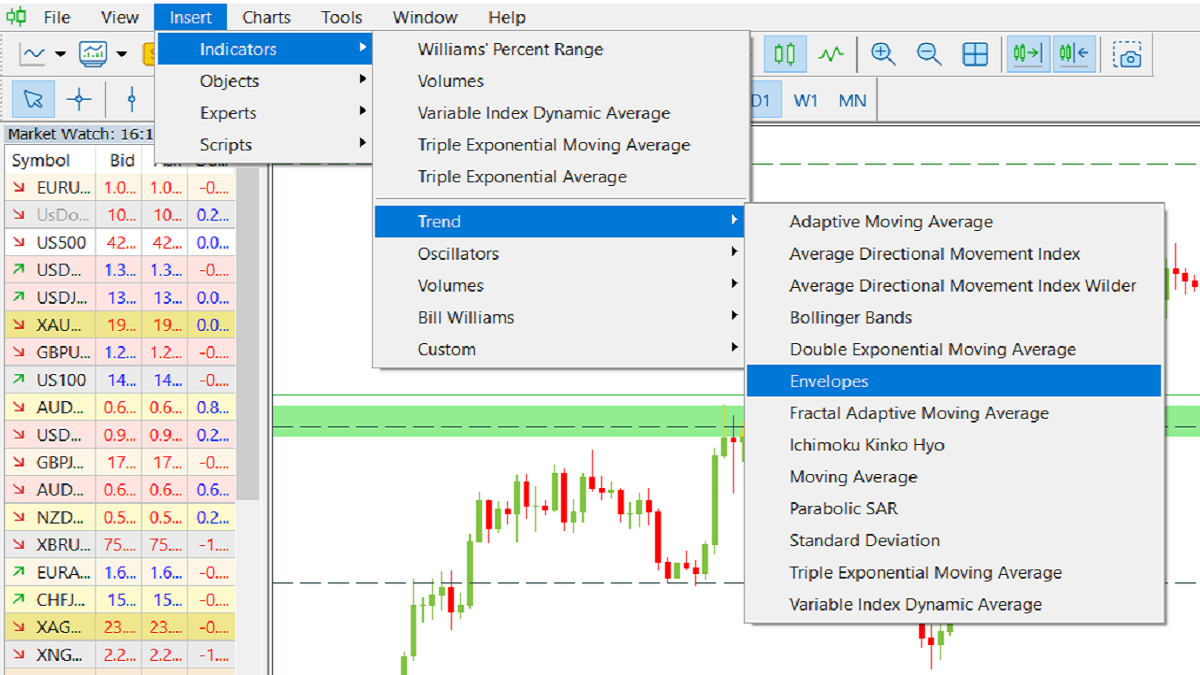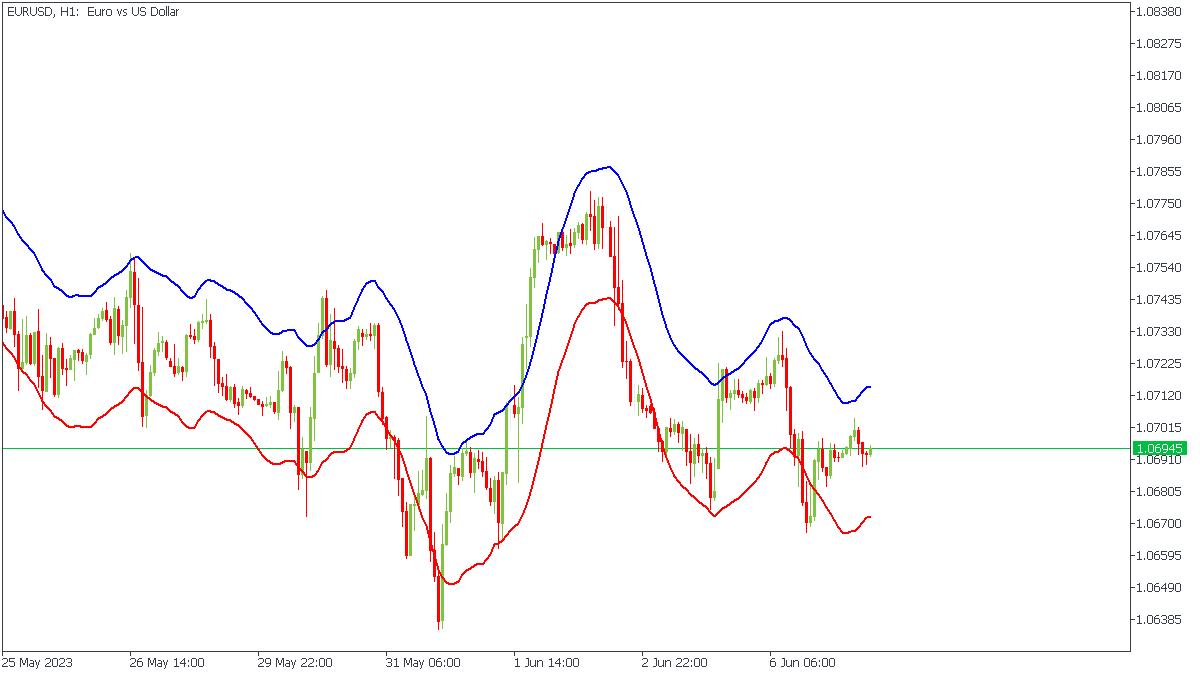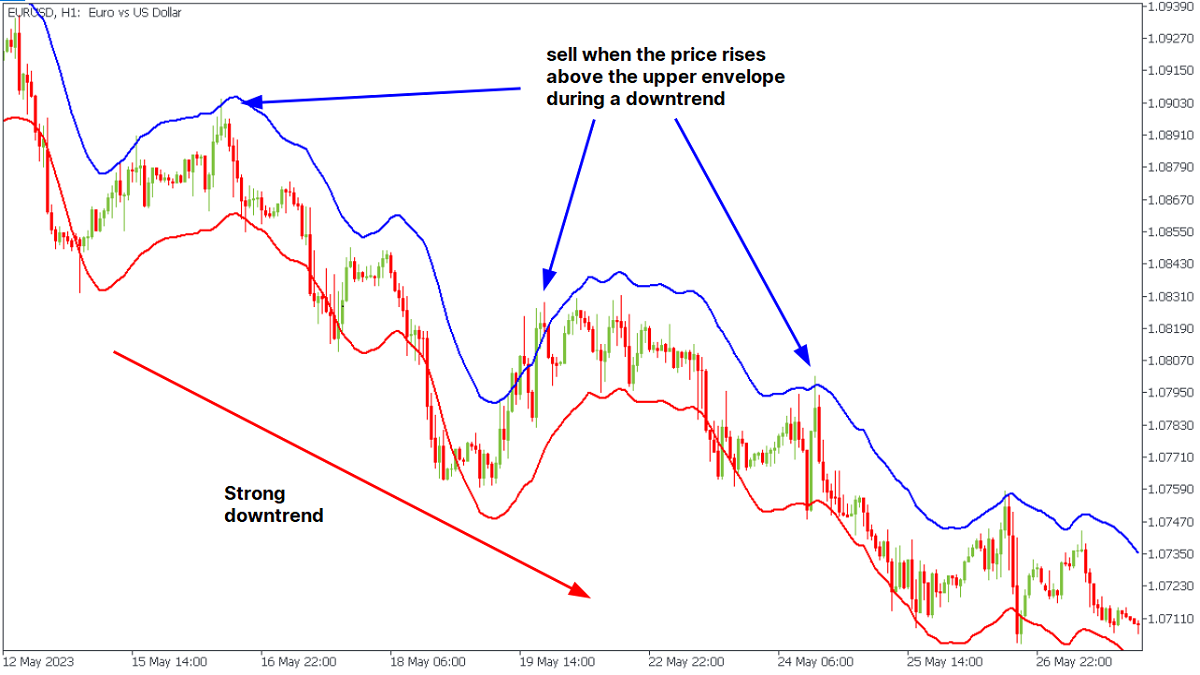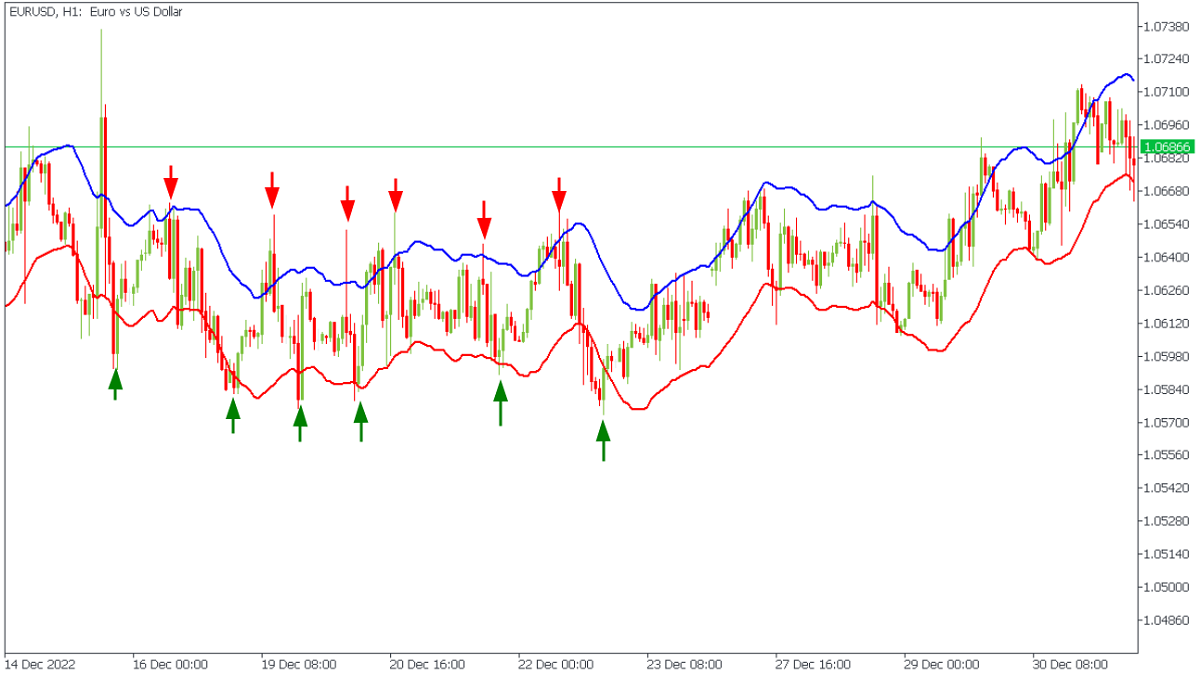In financial markets and trading, traders utilize numerous technical indicators to analyze price movements and make informed decisions. One such indicator is the envelopes indicator. This article aims to provide a comprehensive understanding of the envelopes indicator, how it works, how to use it effectively, how to calculate it, interpret it, and its limitations.
What Is an Envelopes Indicator?
The envelopes indicator is a popular tool among traders. It is an overlay indicator plotted on the price chart that consists of two moving averages, one located above and the other below the price. The envelopes indicator aims to help identify potential overbought and oversold levels and provides signals for possible trend reversals.
How Envelopes Work
The envelopes indicator is based on the concept that prices fluctuate within a certain range around a moving average. The envelopes indicator visually represents this range by plotting two lines or bands around the moving average. The width of the envelopes can be adjusted to suit the trader's preferences and market conditions.
The market is overbought when the price moves toward the upper band, indicating a possible reversal or correction to the downside. Conversely, when the price approaches the lower band, it suggests that the market is oversold, signaling a potential reversal or correction to the upside. Traders often look for price interactions with the bands as potential entry or exit points for their trades.
How to Use Envelopes Indicator
When you download MetaTrader 4 (MT4) or MetaTrader 5 (MT5), you will discover that the envelopes indicator is a standard tool integrated into the platform's core set of instruments.
To add the envelopes indicator to a chart, click on the “Insert” button in the upper left corner of the MetaTrader window, then click “Indicators” and choose “Trend,” as it is shown in the picture below.

How to set the Envelopes indicator | TradeGlide
The default settings for the Envelopes indicator are:
Period - 14
Shift - 0
Deviation - 0
Method - simple
Apply to - close
It is suggested when using an indicator for the first time to start with the default values. Let's look at these parameters and how they affect the Envelopes indicator.
Period
The "period" refers to the number of candles within a specific timeframe that an indicator utilizes to calculate average price values and generate moving average lines. Increasing the period results in the envelopes indicator incorporating more price data and producing a smoother curve. Traders who prefer less frequent trading may find higher period values more suitable as they create envelopes further apart from the price.
Shift
The "Shift" parameter enables the adjustment of Moving Averages (MAs) along the time axis. The MA lines can be shifted forward or backward by specifying a value in the "Shift" field. For instance, a positive value such as 10 moves the MA lines forward by 10 bars, while a negative value like -10 shifts them backward by 10 bars, and so forth.
Method
The MA method determines how the values are averaged within the selected timeframe specified by the "Period" parameter. The default method is "Simple," where each price value is given equal weight. However, there are alternative averaging methods to choose from. These include "Exponential," "Smoothed," and "Linear Weighted," each offering different approaches to calculating the moving averages.
Apply To
"Apply to" defines which type of price value is used for each bar. The default value is "Close," but many other options exist, including high, low, open, or median.
Deviation
The "Deviation" parameter determines the vertical shift of the moving average lines along the price axis. Essentially, it controls the width or narrowness of the envelopes. A value of 0.1 signifies that the moving average lines will be shifted up and down by 0.1% of the price.
In the image below, we have added the Envelopes indicator using the default settings to an hourly chart of EURUSD.

Envelopes indicator | TradeGlide
How to calculate Envelopes indicator
The envelopes indicator is typically calculated by adding a percentage or value to the moving average to derive the upper band and subtracting the same percentage or value to obtain the lower band. The percentage or value used to calculate the envelopes can be adjusted based on the trader's preferences and market conditions.
For example, if a trader wants to set the width of the envelopes at 2%, the upper band would be calculated by adding 2% to the moving average. In comparison, the lower band would be derived by subtracting 2% from the moving average.
The Formula is:
- Upper envelope = SMANx X [1 + D%]
- Lower envelope = SMANx X [1 - D%]
N is the number of periods used for the averaging, and D is the deviation value. So if we chose 0.2 for our deviation value, the upper envelope would be 1.002 times the SMA, and the lower envelope would be 0.998 times the SMA.
How to interpret Envelopes indicator
The Envelopes indicator is based on Moving Averages and thus has the specific features and applications as other MAs do. First, the slope of the indicator lines shows the direction of a trend: if the Envelopes bands are sloping up, it’s an uptrend, while if they are sloping down, it’s a downtrend. In addition, the indicator clearly shows the start of a sideways market as its lines become horizontal.
There are several ways to interpret the Envelopes indicator:
- It’s possible to trade inside the channel created by the Envelopes bands: buy when the price reaches the lower band in an uptrend and sell when the price gets to the upper band in a downtrend.

Sell signal by Envelopes indicator | TradeGlide
- When the market is range-bound, the price increases above the upper Envelopes band signal that the asset is overbought and will likely reverse down. Moves below the lower band mean the market is oversold and may reverse up.

How to use Envelopes indicator for trading in range | FBS
Limitations of the Envelope Indicator Formula
While the envelopes indicator can be a valuable tool, it also has limitations. One limitation is that it is a lagging indicator relying on moving averages. As a result, it may not provide timely signals during rapidly changing market conditions or volatile periods.
The envelopes indicator may also generate false signals, especially when the market is strongly trending. In trending markets, prices can remain near the upper or lower band for an extended period, leading to whipsaw trades if traders solely rely on envelope crossovers.
Conclusion
The envelopes indicator is a widely used technical analysis tool that helps traders identify potential overbought and oversold levels, offering signals for possible trend reversals. However, it is important to consider the limitations of the indicator and use it in conjunction with other technical analysis tools to increase its effectiveness. With proper understanding and application, the envelopes indicator can be a valuable addition to a trader's arsenal of technical analysis tools.








No comments:
Post a Comment